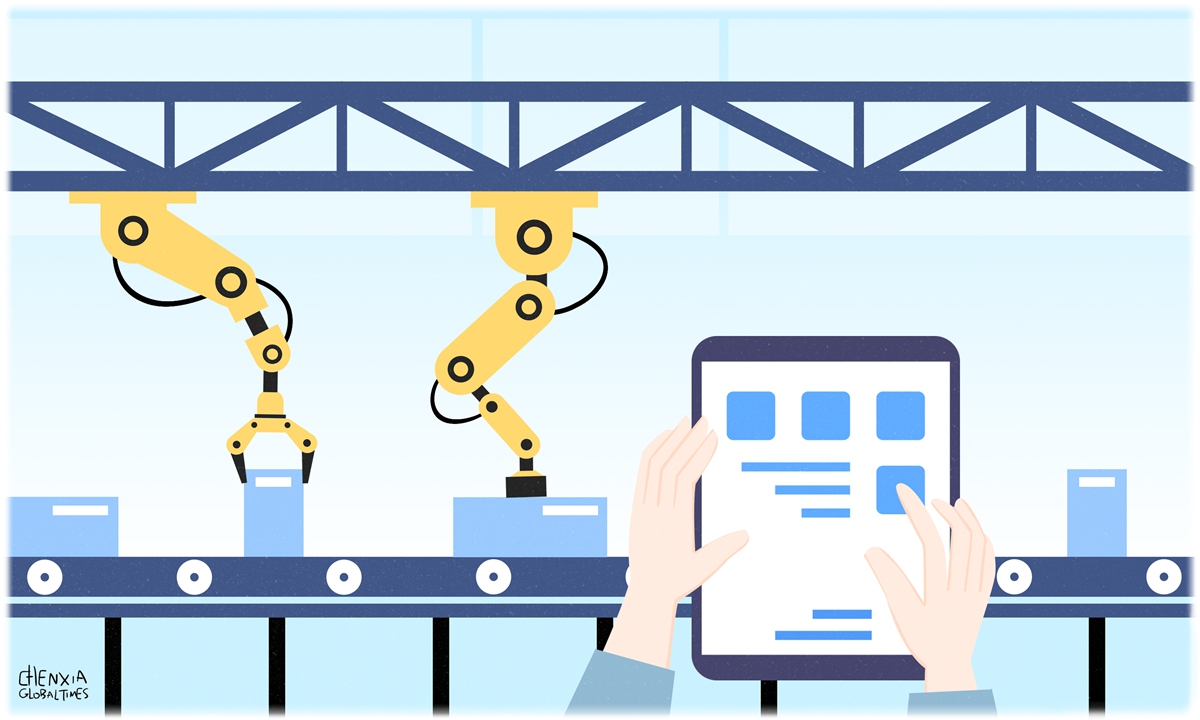china wire braid hydraulic hose factories

Illustration: Chen Xia/Global Times
This china wire braid hydraulic hose factoriesyear's Government Work Report stated that China will continue to focus on deepening structural reforms and shore up technological innovation to modernize the country's industrial system and develop new quality productive forces to drive sustainable economic growth.Developing new quality productive forces will be the new guiding principle for China as it ratchets up efforts to realize modernization and prosperity. The country is to give full rein to the leading role of innovation to press ahead with new forms of industrialization. These priorities form part of the country's agenda to pursue sustainable growth through developing strategically important and future oriented industries.
The new catchphrase "new quality productive forces" refers to advanced productivity liberated from traditional economic growth models. Such productivity is characterized by high-tech, high efficiency and high quality, and symbolizes China's new development paradigm in the new era. Experts say the productive forces encompass new-generation information and communication technology, green energies, high-end equipment, biotechnology, advanced aerospace industry, artificial intelligence, quantum computing and more.
The significance of nurturing new quality productive forces lies in that they can bolster smarter industrialization, higher automation and workplace intelligence, and foster internationally competitive factories, farms, research labs, and advanced digital platforms that support machine learning, autonomous driving, space and deep-sea exploration, as well as new value creation.
Ever since the pandemic came to an end, some Western pundits have exaggerated the short-term challenges facing China, such as a lackluster real estate sector and the weak domestic consumption, pouring cold water on China's economy. But the country isn't facing a "Great Decline" as alleged by the pundits, but instead a "Great Transition" as it takes initiative to replace antiquated economic movers with more dynamic, newer and more potent growth drivers.
That initiative was effectively implemented many years before the pandemic's emergence, evidenced by China's current manufacturing prowess in high-quality batteries, a rapidly surging electric car footprint, wind turbines and solar panels, advanced robotics and state-of-the-art 5G and 5.5G systems, amongst others. These breakthroughs, coupled with China's ever-growing investment in infrastructure, have largely offset a temporary real estate market downturn.
And, examples abound, from the convergence of the latest information and communication technology (ICT) to realize smarter manufacturing, to the ubiquitous application of groundbreaking technologies such as big data, cloud computing, the internet of things (IoT) and AI across different industries, which are fostering cross-industry integration and catalyzing technological innovation in China.
The central government has a clear mandate to vigorously develop new quality productive forces that should be a reinforcement of the earlier initiative. Obviously, the policymakers have turned to technology innovation and high-end manufacturing as the source of China's sustainable growth. Recently, senior government officials have vowed to make the technology-driven intelligent manufacturing and services output account for a substantially larger proportion of its GDP in each of the coming years.
If history is a mirror, the naysayers in the West who intermittently predict a collapsing Chinese economy in the past four decades were always proved wrong. This time, they spread excessive pessimism about the economy, including narratives like "China's economy is peaking," or "China faces a Japan-style Lost Decade," but they will be proved wrong again, because China is actually entering a new era of tech-led transition, indispensable for it to avert a long-term descending.
The task of accelerating the growth of new quality productive forces will enhance the resilience and competitiveness of China's industrial and supply chains, advance new industrialization and inject impetus into the country's economic recovery. It will ensure the security of the industrial and supply chain in Asia, strengthening this region's capacity to buffer against external risks and geopolitical shocks.
Faced with increasingly fierce international competition, China's emphasis on developing new quality productive forces will help move the country's manufacturing sector up to the medium-to-high end of the global value chain, and consolidate its economic recovery momentum at the same time.
When it comes to smart manufacturing, big data, IoT, robotics and more, China has been leading the world over recent years. Now, China's industrial automation level is unparalleled, and Chinese factories are standing at the forefront of new manufacturing. Increasingly, more countries will look to China for new technology, new designs and enhanced economic sustainability.
The pursuit for new quality productive forces transcends quantitative growth to realize qualitative development. Aligned with other elements propelling high-quality growth, this new drive prioritizes the quality of products and services, bolstering core competitiveness. To accelerate new industrialization, China is currently pushing for a large-scale industrial equipment renewals and the trade-in of cars and home appliances, which is expected to lead to trillions of yuan worth of business opportunities in the following years.
The Government Work Report confirmed that China will step up R&D and application of big data and AI, launch an AI Plus initiative, and build digital industry clusters with international competitiveness in the country. For example, China's blossoming smart mobile market, enabled by its advanced 5G technology, will continuously fuel economic growth, with the country's 3.38 million scattered 5G base stations now support a large proportion of the world's total 5G connections. China's very advanced digital ecosystem in the world will act as a strong base of future economic growth and may help it gain the upper hand in market competition.
The guiding phrase of "new quality productive forces" actually shows that China is pivoting to a growth model that prizes quality over quantity, new and high technology over sweating plants. It is clear-cut for all to see that China is trying to think about economic plans not only for the short term but also for the long run.
The author is an editor with the Global Times. bizopinion@globaltimes.com.cn